All over the world there is a strong movement against resource waste, for recovery and reuse, and wood is no exception. We value wood wherever we see it and that is why we are in favour of its rational exploitation and recovery wherever possible. Old houses and buildings, which due to their advanced state of decay end up being demolished, are the main source of wood. Large beams and planks are salvaged from houses and can be reused if portions irreparably damaged by the weather are removed. There are other sources of recovered wood that should not be neglected. Replacing windows and doors, old furniture or wooden packaging (boxes, crates, pallets) are just a few examples.
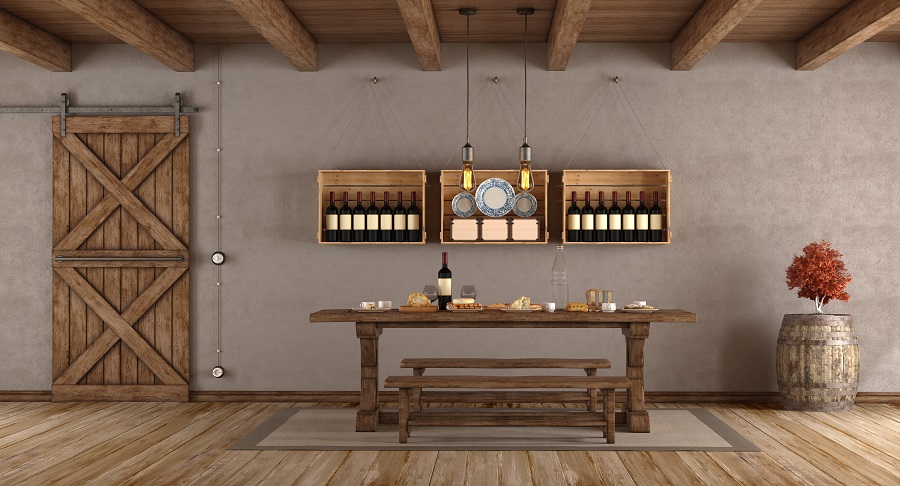
Wood recovery is primarily an act of environmental responsibility, but it can also be a business idea. Old wood is a popular material with designers, both interior and product designers. It is used to make decorative floors and walls, to build attics for new houses, to make furniture and decorative objects with an authentic old look. Wood has time embedded in it and carries with it part of the stories of past lives, like a silent witness to past lives.
Durability - an important property in wood recovery
Not all species withstand the tests of time in the same way and sometimes the wood is so degraded that it cannot be salvaged to build something else. The property that makes wood resistant over time to rot, insect, fungal and mould attack and natural decay is called sustainability. It is the property that measures the resistance of wood to decay caused by natural factors. Some species are less durable and grind faster, are more easily attacked by decay and other insects, others are durable, hardy, time leaving only a patina on their surface. Durable species include oak tree, acacia, chestnut, ulmul and resinous (the resin increases the wood's resistance to water, which is responsible for xylophagous fungi). Those with low resistance to moisture, and therefore to fungal and insect attack, are poplar, birch, fagul, willow.
Durability is influenced by the structure and the age at which the tree was felled. A young tree is less durable than a mature one. The young tree needs more food, most of the cells are used for this purpose. The structure of the wood is looser, less resistant, with an increased tendency to absorb moisture. The mature tree has a tougher central zone, made up of cells that are only supportive, they do not transport food. Wood from this zone is stronger, more durable and denser. Representatives of salvage companies say that wood from houses built 80-100 years ago is very good and strong, better than new wood. The explanation is that in the past, felling was not massive. Trees were left to mature and only then were they felled and used to build houses and sheds.
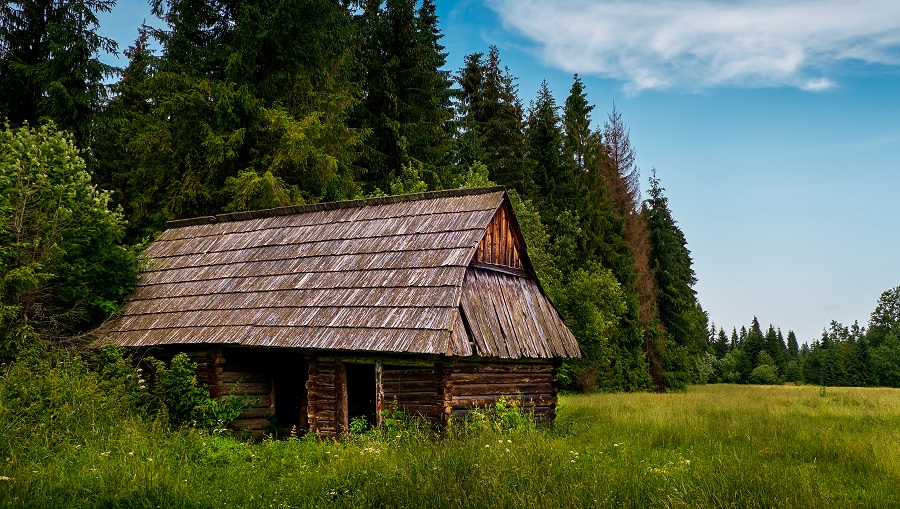
Recovered wood may be infested with curry larvae. Treatment is a must
Very rarely is wood used as salvaged from an old house or furniture. The risk of infestation over time with insects that reduce its strength is high and careful control and preventive treatments are recommended. Existence curry holes is a sign, but not a certainty that the insect is still in the wood. Fresh wood dust coming out of the holes or a specific gnawing noise indicates that the grubs are inside. They can also be inside without those specific small, round holes clustered several in one place. These holes appear when the insect reaches maturity and emerges from the wood.
During its very short life, the adult hornworm lays eggs in fine cracks in the surface of the wood, especially in the one that provides favourable conditions for its development (humidity in the range 14-20%). After laying eggs, the adult insect dies. The eggs are very hardy and even if the humidity or temperature drops very low, they are not destroyed but preserved until conditions become suitable for development. The larvae then hatch from the eggs and begin to feed on the wood, burrowing into it.
It's not easy to get rid of curry, but it's not impossible either. Reclaimed wood that has natural decay holes is sometimes more valuable than healthy wood. There are very aggressive solutions and specific treatments and the wood can be saved. Repeated spraying or gassing with special solutions is the most commonly used method. It is better that the treatment is done by specialised companies because it is very toxic. There are also simpler methods of treatment, applicable only to small pieces of wood or natural methods. More information about them here.
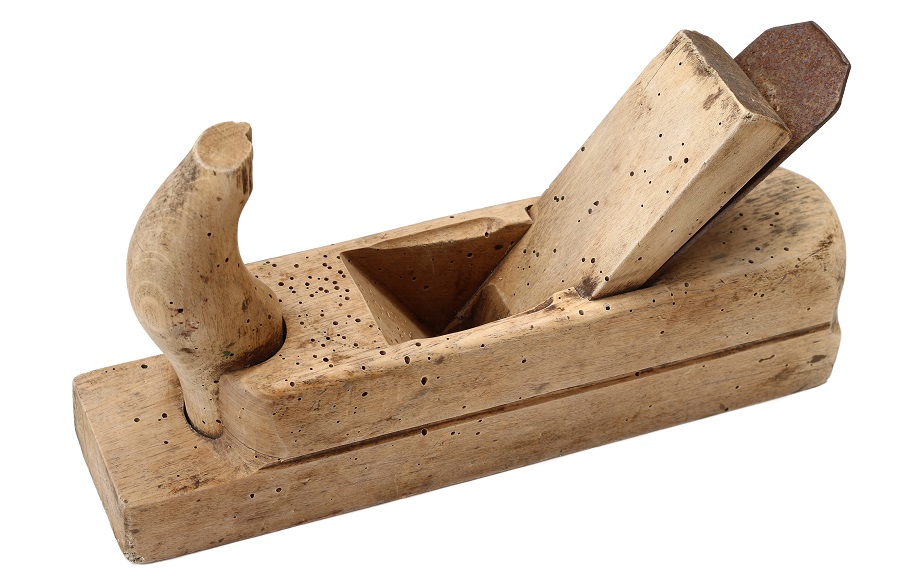
Hygienisation of reclaimed wood preserving the patina of time
To remove the surface layer covered with dirt, the wood can be sanded, sanded or sandblasted with sand or baking soda. On highly durable species (acacia, oak) clean wood will immediately emerge from under the fine dirt and mould. Planks and beams affected by wind or rain have a structuring effect on the surface, i.e. the natural pattern of the wood is highlighted as a 3D image. It is the result of the different strengths of the two types of wood in the annual ring - latewood and earlywood. Thanks to this structuring, when lightly planed, the wood acquires a unique patina that is difficult to reproduce by artificial methods.
To avoid injury, the salvaged wood should be cleaned of nails, spikes, cobars or other fasteners. Some companies also use metal detectors to ensure that they deliver perfectly clean wood in this respect. Remaining holes should not be covered as they are part of the charm of this wood. Traces of rubble, bricks or cement do not look good and should be removed.
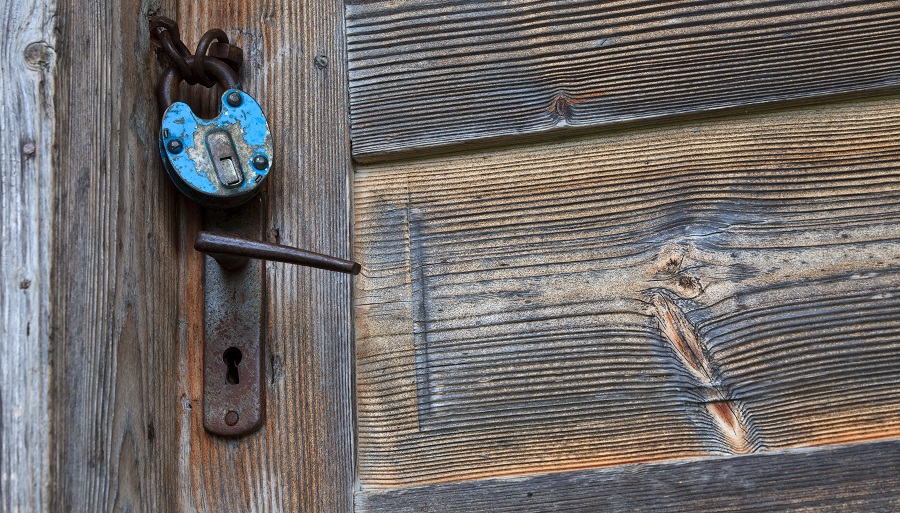
Ideas for using reclaimed wood
In Western European countries, in the USA or Australia there are a lot of warehouses selling old wood. It's a big business, with companies that demolish old buildings, salvage wood and treat it with insecticides. The wood is catalogued, you know where it came from and often the buyer can find out how old it is. It's a profitable business because old wood is prized by designers, architects and artists who are willing to pay several times more than for new, clean wood.
One idea that has caught on with us is interior decoration with old wood. You can board up walls, make floors, put in exposed beams. Old wood gives a bohemian feel and is often combined with metal for industrial-style decor. There are even braver companies using reclaimed wood to build houses or make furniture and objects with an old look.
Using epoxy resins for table tops or other pieces of furniture has proven to be a very good opportunity to use any piece of wood, not just those that have kept very well. Epoxy resin encapsulates the wood, resulting in durable items with very damaged wood. Using very transparent resin or with added colouring effects can produce spectacular objects.
Refurbishing old furniture, doors and windows - another form of recovery
The habit of reusing pieces of furniture, sometimes changing their purpose after they have been repainted and repaired, was common in the past. Now, when we no longer like a cupboard, a table or an armchair, we dispense with them very easily by buying new ones. We do the same with windows, doors or flooring. Sometimes we don't even realise that this too is a waste of resources. And even if we do, the craftsmen who would come to our homes to repair them are almost gone and the upholstery shops we used to find on a street corner where we could fix a bed or a chair that had been stripped have closed.
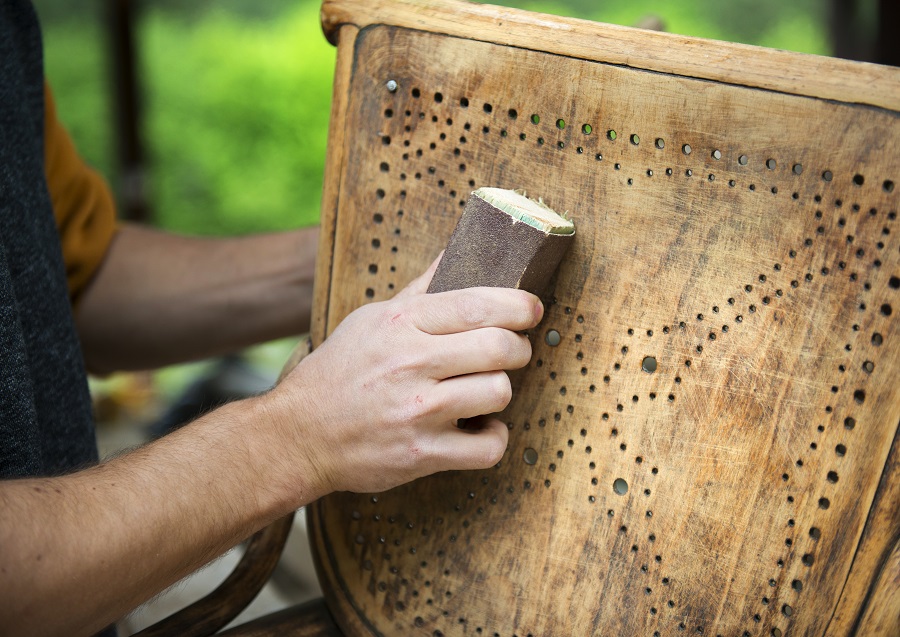
Reconditioning old furniture can be a business idea. There are still people who appreciate old furniture inherited from parents and grandparents and want to keep it. But refurbishing is not an easy job, and you have to understand that sometimes it's harder to repair an old thing than to make a new one. Preserving memories, however, is priceless.
Total transformation of appearancei of pieces of furniture by painting is an activity that is beginning to be transformed into a business. Furniture increases in value as a result of the transformation, becoming a small work of art. There are reinterpretations of furniture by designers, architects or visual artists and the piece becomes the final eye-catcher of the room. This is not a trivial refurbishment but a creative process.
Using discarded wine barrels to make flooring, water-borne wood to make sculptures and art, reclaimed wood from construction to make fences, gazebos, pergolas or garden sheds are other ideas for reclaiming wood. Let's try to salvage wood every chance we get and who knows, maybe a business idea will come up.
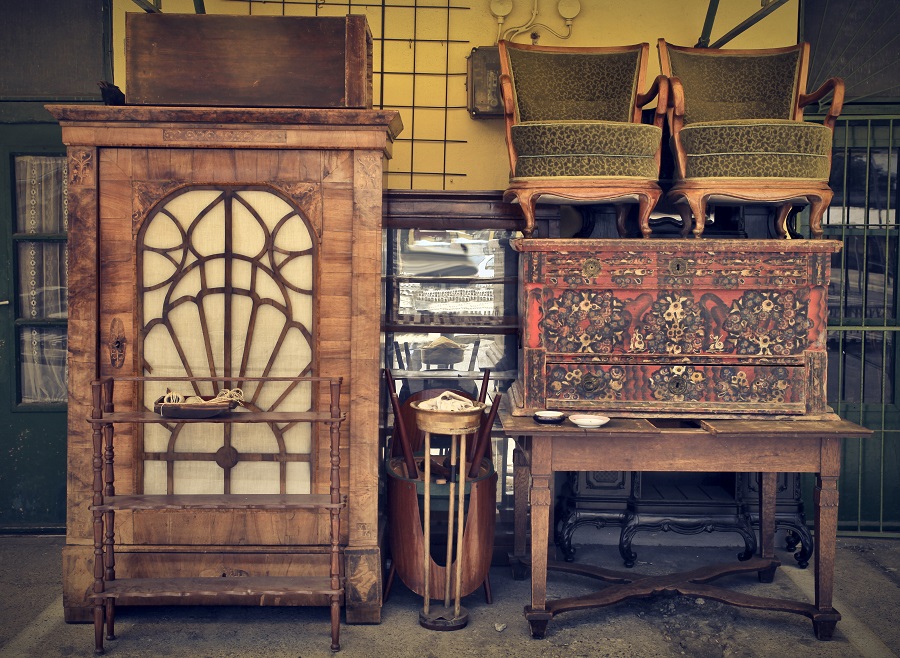


























We don't know how to defend our forests and anyone else thinks they're going to recover wood... !!! A nation that doesn't even sort its garbage, that throws anything anywhere at any time, a nation that builds an uninsulated septic tank next to its well ..???? Maybe in 100 years we will recover the wood found in the desert that will be left of this country !!!